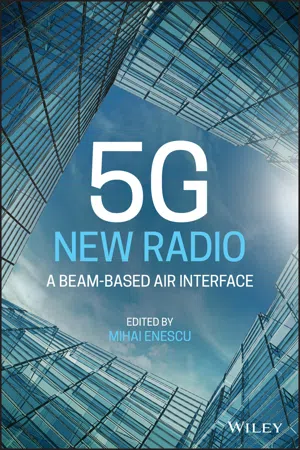1.1 Why 5G?
It is perhaps a reasonable question to ask why we need 5G? Was in fact 4G/LTE and its evolution sufficient? Looking at LTE we note that indeed, we identify a good set of advanced technical components (speaking from the perspective of physical layer): it has multiple antennas scaling to the possibility to use massive MIMO (Multiple Input Multiple Output), it supports emerging connectivity techniques such as device-to-device, NB-IoT, Ultra Reliable and Low Latency Communications (URLLC). So why 5G? Every decade seems to bring a new wave of technology, this was the case with the arrival of 3G and 4G. From this basic perspective, the arrival of 5G strengthens this “rule.” Is there a need for 5G, especially given the fact that LTE and LTE-pro are capable of delivering high data rates and flexible technology? Yes, there is a need for 5G and there are a couple of reasons which we will elaborate next.
Like any evolving system, LTE has reached the limit of being a complicated design, its limitations coming from the fact that the basic design conceived a decade ago cannot be updated further in a simple way and cannot be kept easily compatible with the earlier equipment. The evolution of 3GPP generations has maintained the rule that all new devices are able to function in the older networks and vice versa without loss of functionality. As some of the components introduced at the very beginning of 4G need complicated solutions in order to be optimized, new functionality must be introduced so that compatibility with the old functionality is maintained. To give a simple example, the very first LTE release was designed based on Common Reference Signals (CRSs), up to four ports, which are transmitted all the time, hence they are always ON. However, the system cannot turn these reference signals OFF, nor can scale them when the number of antennas is increasing at the transmitter without causing complications to existing device base. While CRS were a good design at its time, it was also unscalable in the future, by scalability meaning, for example, increasing the number of ports as the number of transmit antennas increases. Perhaps one of the most important lessons learned from LTE is indeed the need for a more flexible and scalable system toward the future. This is an intrinsic characteristic of 5G NR design and we are covering perhaps the most important new development over LTE, the multi-antenna perspective, in this book.
Another reason for 5G is the need for harvesting the spectrum where cellular technology has not been used so far. Spectrum is a costly resource, not easy to handle in a global environment, especially keeping in mind the cost of both devices and network equipment. 4G/LTE has been deployed in the low bands and with these occupied, there is an obvious need and choice to evolve to the areas of unoccupied spectrum to obtain more capacity for the system in general. Most of the first deployments rely on mid band of 3.5/4.5 GHz as well as 28/39 GHz, bands that are mostly unoccupied by LTE in the lower end, and lacking ability for LTE to be even deployed on in on the higher end. While moving to higher frequency bands not earlier used for cellular radio transmissions is not an easy step, it comes with the good news that the antenna form factor gets smaller as the carrier frequency gets higher. However, a lot of other challenges are arising from the fact that the pathloss on higher frequencies is also higher, and the power amplifier technologies need to evolve to support sufficient transmit powers with reasonable energy efficiency in a consumer device price point. As a first step, the 5G NR is designed to operate on bands starting from under 1 GHz and reaching up to 52 GHz, with more design focus to come in the area of 52 GHz and beyond.
The need for this book came from the fact that it seems necessary to link the dots of the existing 5G specifications into a cursive description of what the system is about and why it has been created the way it is. This book has been written by standardization experts who have been and currently are participating actively in 3GPP discussions. Most of them have also been involved in designing the 4G system with the area of expertise reaching back to 2G and 3G. We hope that the description herein will help the reader into getting a better understanding of how the 5G physical layer and related higher layer components are functioning and especially why they were designed to function that way.
While the existing 3GPP standards describe what has been agreed in the meetings, in this book we want to take this one step further and also present the context of some of the discussions and various altern...
